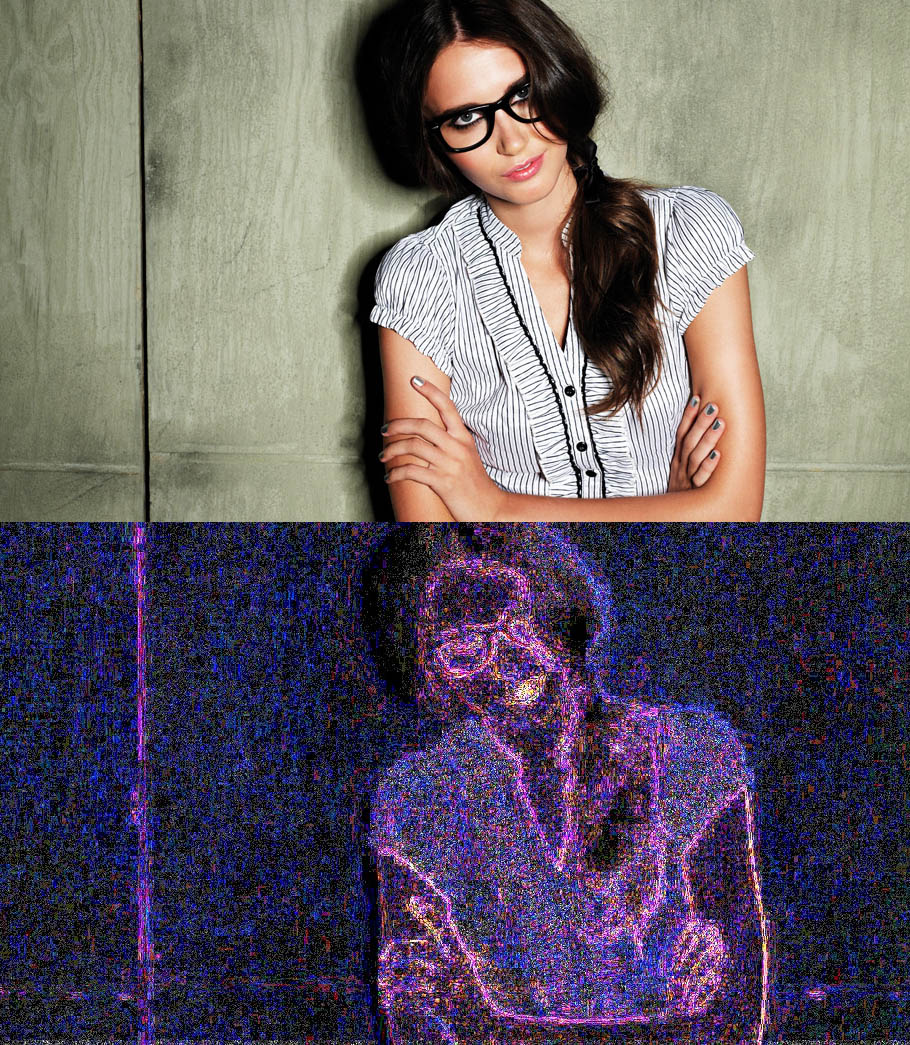Let's be honest: the world of photo manipulation software, with Photoshop leading the way, rules over pretty much every aspect of how we are reflected by society and culture. From political campaign posters that brush away wrinkles to glamour mags that shrink waists, there is very little truth that can be found in anything that follows the sound of a shutter.
But this is common knowledge; Photoshop has been available for years and while it may have started out as software for professional artists, it eventually became a toy for the general public to peruse. The 'beauty' of this type of software is that once you've compressed a file (into say, a jpeg), it's impossible to restore the original image. In other words, without the original source image, there's no discernible way for the public to figure out if there were blemishes removed from the face of Angelina Jolie or how many cup sizes were added to the cover women of Cosmo.
This might be changing. Two years ago, a website called Image Forensics: Error Level Analysis launched which, thanks to the research of Dr. Neal Krawetz, was able to accurately determine where an image had been manipulated with a kind of heat-sensor algorithm. Though the site has since closed down (it has been recreated here), it pointed to an interesting future in which one could begin to separate reality from digitization (cue The Matrix comparisons). And could you imagine a world where instead of harbouring absurd camera filters, our smart phones had applications that could determine if something had been Photoshopped?

Above: The brightened portions of this Error Level Analysis example show where the image has been manipulated.
That future is closer than you think. FourMatch is a new piece of software that can determine if a photograph has been edited (though it can't determine how). While one can determine some immediate applications of this technology, it does have some more interesting benefits such as validating photographic evidence in crime or checking the reliability of images that sweep across social media. FourMatch president, Kevin Connor, spoke to us of its origins, "I spent over 15 years at Adobe leading the Photoshop product line at Adobe, and in that time I would get frequent questions about how to determine whether an image was authentic or manipulated... as digital technology has caused photography to permeate our culture ever more as a means of communication, the importance and significance of the issue continued to grow." But that's just the beginning. Connor hopes to expand FourMatch to be able to employ other techniques such as checking for consistent lighting or evidence of cloning.
Though technology still has a lot of catching up to do if it's going to balance out against titans like Photoshop, the emergence of these forensic-like applications serve as comforting reminders that technology does improve both ways. It now rests with the public to determine whether we hold up our own mirror, or we let the commercialization industry hold up the mirror for us.